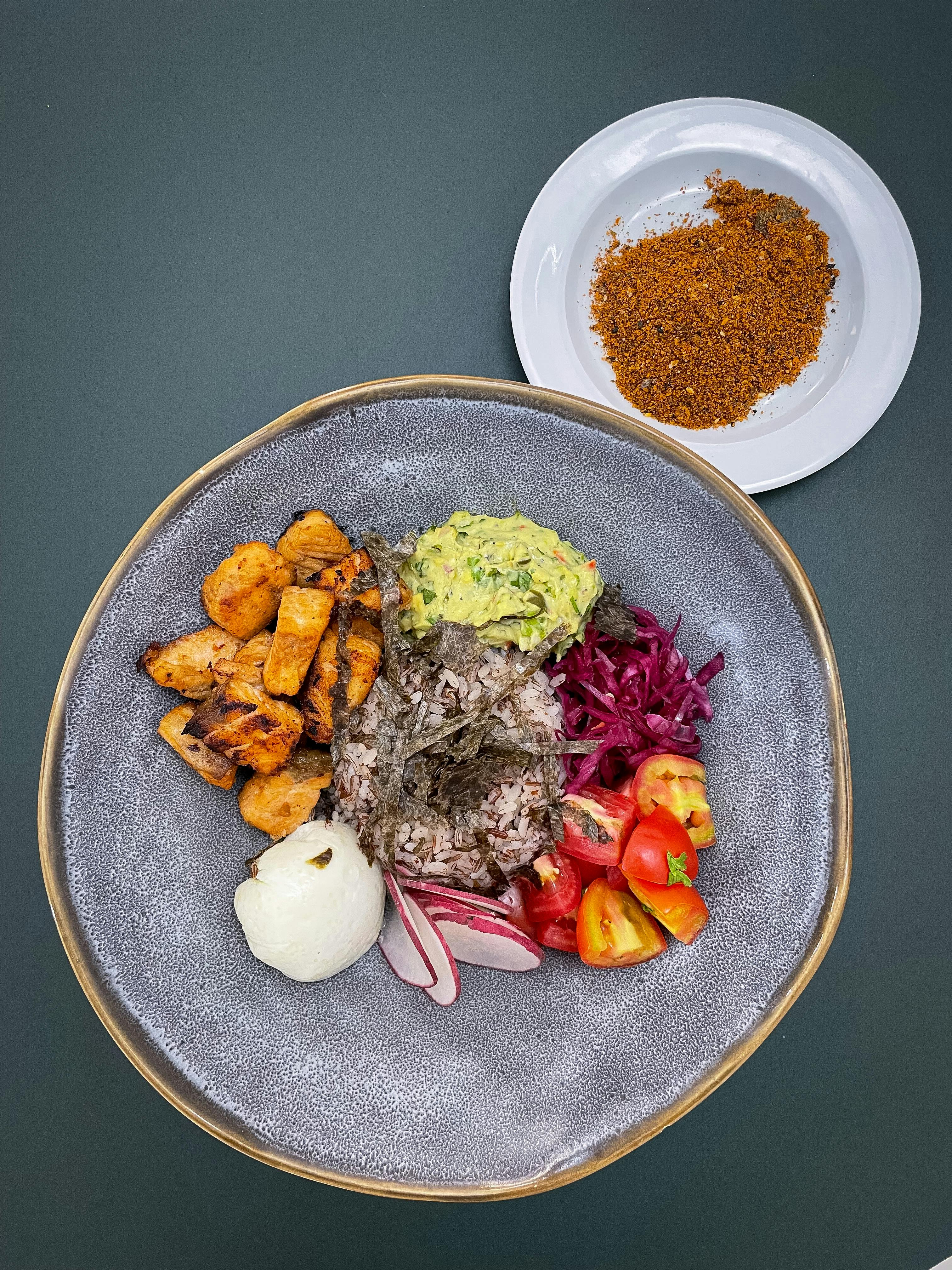Essential Guide to Rice Serving Size for Proper Nutrition in 2025
Rice is a staple food for millions around the world, providing a primary source of energy and nutrition. Understanding the appropriate rice serving size is crucial for maintaining a balanced diet and ensuring portion control, especially as dietary guidelines continue to evolve. In this essential guide, we will delve into rice serving sizes, helping you navigate your way through various measurements and recommendations for different occasions, from casual family dinners to meal prep.
Learning how to measure rice properly can aid in making healthier choices, particularly for those mindful of their carbohydrate intake. This article will cover topics such as cooked rice serving sizes, uncooked rice portions, and tips for adapting serving sizes based on dietary needs. By the end, you'll have a clear understanding of how much rice per person is appropriate and how to use a rice serving calculator effectively.
Here’s a preview of what you’ll learn:
- Determining standard rice servings for various occasions.
- Understanding the nutritional facts related to different types of rice.
- Practical examples and tips for rice portion control.
Understanding Rice Portions and Measurements
Building on the basics of rice as a dietary staple, it’s essential to grasp the different measurements associated with rice servings. Whether you are cooking white, brown, basmati, or jasmine rice, the method of measuring can differ greatly.
Types of Rice and Their Serving Sizes
Rice comes in various types, each with distinct cooking times and nutritional profiles. For instance, the brown rice serving size typically differs from white rice, with brown rice requiring a longer cooking time. A standard serving size of cooked white rice is about 1/2 cup, whereas for brown rice, it might be slightly less due to its denser nature.
Measuring Uncooked Rice For Cooking
To determine how much uncooked rice you'll need, a common guideline is to use a 1/4 cup per person for uncooked rice, which generally yields about 3/4 cup of cooked rice. This is crucial for meal prepping, as accurately measuring uncooked rice ensures you are not left with too much or too little at the end of your cooking session.
Portion Control and Dietary Needs
It's important to adjust rice serving sizes based on individual dietary needs. For instance, those watching their carbohydrate intake might opt for smaller portions, while those engaging in more physically demanding activities may require larger servings. Options such as utilizing a rice serving calculator can assist in determining personalized serving sizes.
Standard Rice Serving Comparisons
This naturally leads us to a comparison of standard rice serving sizes across different cuisines and cultures. Rice servings can vary not only by the type of rice but also by cultural practices, impacting the amount served during meals.
Typical Serving Sizes in Different Cultures
Understanding traditional rice portions can help when preparing meals for gatherings. For example, in some Asian cuisines, rice is often served as a main component of a meal, with larger portions of about 1 cup cooked per person, while in Western settings, rice may serve more as a side dish with smaller portions around 1/2 cup.
Healthy Rice Serving Sizes for Family Meals
For families, it can be beneficial to create guidelines for healthy rice servings. Aiming for around 1/2 to 3/4 cup of cooked rice per adult and slightly less for children can balance out rice as a carbohydrate alongside other food groups, ensuring a comprehensive meal.
Serving Rice for Gatherings and Events
When serving rice for larger gatherings, understanding rice serving guides, like providing about 1/2 cup of uncooked rice per person, will help calculate overall quantities. This approach prevents waste while ensuring everyone is adequately fed. Keep in mind to complement rice dishes with protein and vegetables to provide a balanced diet.
Rice Cooking Methods and Their Impact on Serving Size
Connected to the preparation of rice is how varying cooking methods can influence the serving size. Cooking rice can involve different techniques, and each method may yield differing results in terms of texture and portioning.
Boiling vs. Steaming Rice
The choice between boiling and steaming rice can affect its volume. Boiled rice tends to absorb more water, resulting in fluffier grains, while steamed rice retains more of its original volume. These differences can skew how much rice cooks per serving, so understanding your chosen method's unique characteristics is essential.
Calculating Rice Serving Sizes for Meal Prep
For meal prepping, knowing how to calculate rice servings accurately allows for efficient planning. If preparing meals for multiple days, a quick method is to divide the total uncooked rice by the number of servings required. This ensures uniformity and that dietary preferences are met.
Rice Cooking Times and Their Importance
Cooking times can vary widely depending on the type of rice used. For instance, jasmine rice typically cooks faster than brown rice. This knowledge is key when planning meals, as shorter cooking times can allow for quicker meal assembly without compromising nutritional quality.
Nutritional Profile of Rice and Recommended Servings
With these basics established, let’s delve into the nutritional aspects of rice. Understanding rice nutrition facts is paramount when determining how much rice to include in your meals.
Analyzing Rice Nutrition for Healthy Eating
Rice, particularly whole grain varieties, provides essential nutrients like fiber, protein, and B vitamins. Incorporating a healthy rice serving size can contribute positively to a balanced diet, providing quick energy and satiety. It’s prudent to adjust servings based on activity levels to maintain energy stores effectively.
Rice Serving Sizes in Dietary Plans
Implementing rice into dietary plans, especially for weight management, requires careful consideration of serving sizes. For instance, adults may follow guidelines of limiting rice servings to around 1/2 cup cooked per meal, while children might have smaller servings to help them regulate their carbs efficiently.
Evaluating Rice for Specific Dietary Requirements
For individuals with specific dietary needs, such as those managing diabetes, understanding the glycemic index of various rice types can inform better choices. Choosing lower glycemic index options, like brown rice, can lead to better blood sugar control and healthier serving sizes overall.

Practical Tips for Measuring and Serving Rice
Having covered nutritional fundamentals, let’s explore practical applications for measuring and serving rice. Being equipped with practical tips ensures successful preparation and serving in line with dietary needs.
Using Measuring Utensils for Accurate Portions
Accurately measuring uncooked rice with the right utensils can significantly affect the outcome of your rice servings. Using standard measuring cups or a rice serving spoon can help maintain accuracy during preparation, ensuring you achieve the desired serving sizes.
Common Mistakes to Avoid When Serving Rice
One common error is over-serving rice, which often leads to leftovers or waste. A good strategy is to use a rice serving guide, promoting portion control and helping you stick to recommended intake levels.
Adapting Rice Servings for Different Types of Meals
Understanding how to adjust rice servings for different meal types is crucial. For instance, when serving rice with a hearty protein main dish, one might prefer smaller rice servings, whereas with vegetable-centric dishes, a larger rice portion might be suitable to help balance the plates.
Conclusion: Mastering Rice Servings for Optimal Nutrition
In summary, mastering the serving sizes of rice is essential for proper nutrition in 2025. By adapting measurements based on cultural practices, dietary needs, and meal types, you can enjoy rice’s many benefits while keeping portion control in mind. This guide serves as a foundation for anyone seeking to balance their meals effectively.
By implementing the strategies discussed, such as using a rice serving calculator and understanding nutritional profiles, you will be capable of preparing meals that are not only satisfying but also nutritionally sound. As you embark on your meal prepping journey or gather for family dinners, these insights into rice servings will ensure both health and enjoyment on your plate!

